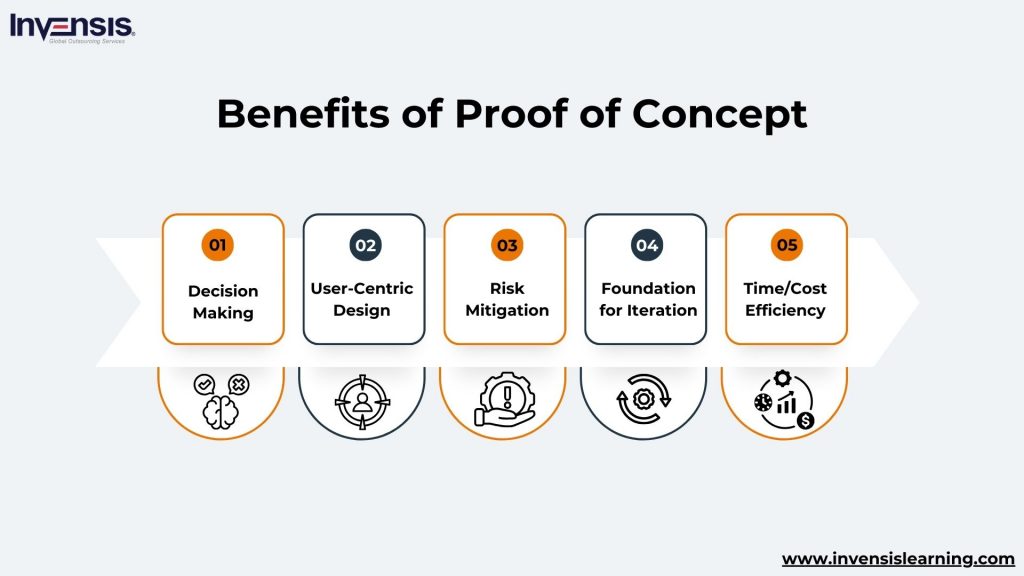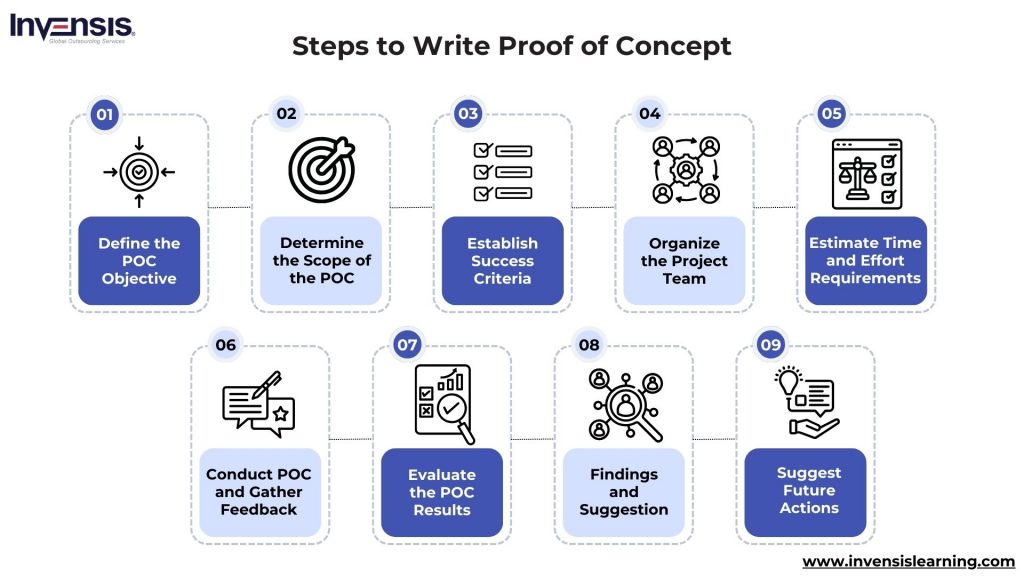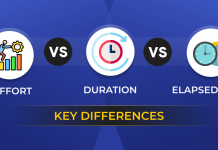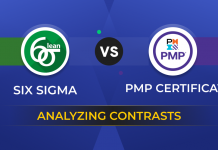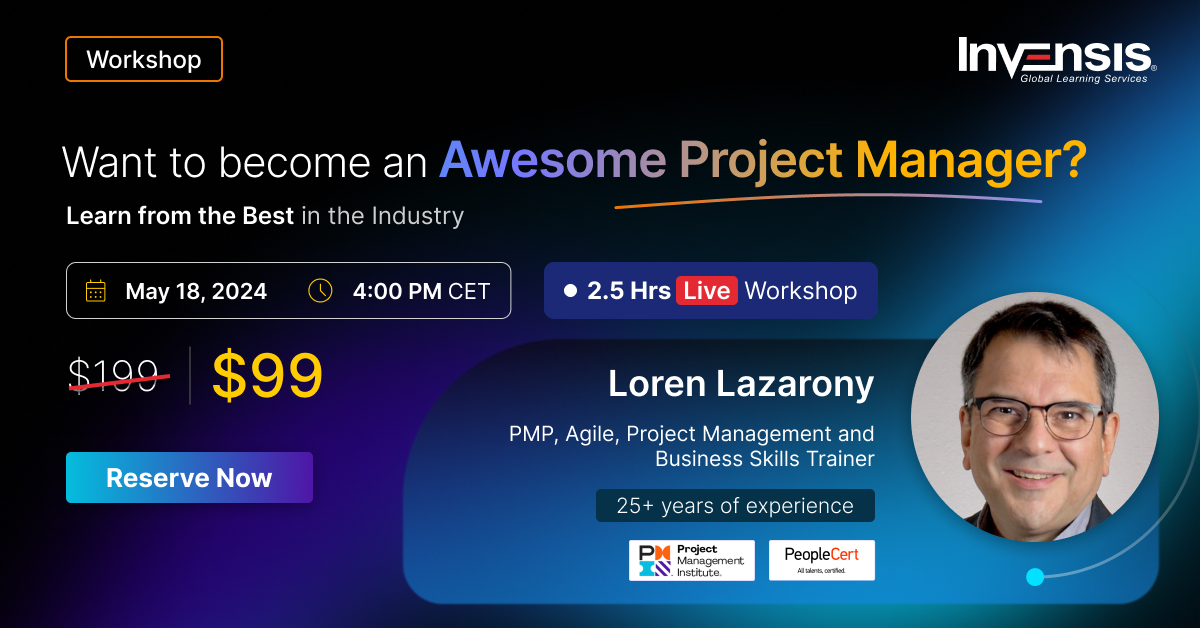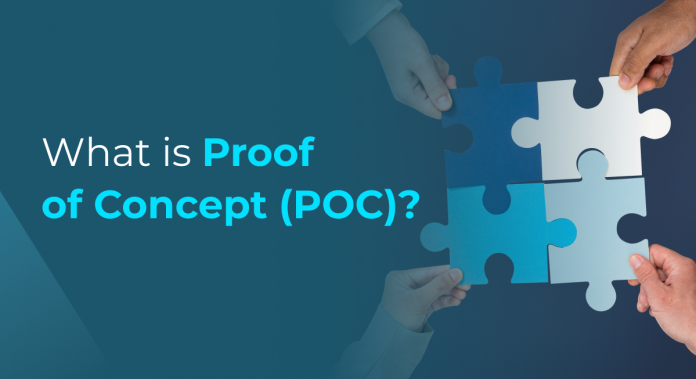
Proof of Concept (POC) is a fundamental requirement for teams and professionals embarking on any project or initiative, serving as a crucial preliminary assessment to validate their ideas’ feasibility and potential success. Understanding the concept of POC and how to write one effectively is crucial for any project or initiative.
In this comprehensive guide, we will define Proof of Concept, its significance in project development, step-by-step instructions on how to write one, illustrative examples showcasing its application across various industries, and a comparison between Proof of Concept and Prototype to distinguish their roles.
Table of Content
- What is proof of concept (POC)?
- Importance of Proof of Concept
- Steps to Write Proof of Concept
- Examples of Proof of Concept
- Proof of Concept vs Prototype
- Conclusion
What is proof of concept (POC)?
So, what exactly is a proof of concept (POC)? Well, think of it as a test drive for an idea. It’s like dipping your toe in the water before diving into the deep end. Essentially, a Proof of Concept is a way to see if something can actually work before going all-in.
Imagine you’ve got this brilliant idea buzzing around in your head, but you’re unsure if it’s a stroke of genius or a flight of fancy. That’s where the POC comes in. It’s your chance to see if your idea can be executed.
Now, don’t get it twisted – a Proof of Concept isn’t about selling your idea to the masses or figuring out the nitty-gritty details of how to make it happen. No, it’s all about answering one simple question: Can this thing actually work?
Proof of Concepts are like mini-experiments. They’re usually small-scale and don’t require a huge investment of time or resources. It’s just a way to dip your toe in the water and see if the temperature’s right before you dive in headfirst.
Businesses use Proof of Concepts because they help minimize risk. Instead of going all-in on a wild idea, you can test it first and see if it’s worth pursuing.
And it’s not just businesses that benefit from the concept. They’re also a great way for individual inventors and entrepreneurs to test their ideas without breaking the bank. Plus, they’re a fantastic way to get feedback from real people and make sure your idea actually solves a problem or meets a need.
Proof of Concept (POC) is a demonstration or experiment conducted to validate the feasibility, functionality, or potential of a concept, idea, design, or technology. It’s a preliminary step taken before investing significant resources into a full-scale implementation.
In a POC, a small-scale version or prototype of the concept is developed and tested under controlled conditions to determine its viability and potential for success. The goal of a POC is to gather empirical evidence, mitigate risks, and make informed decisions about whether to proceed with further development or investment.
Importance of Proof of Concept
The significance of a proof of concept (POC) cannot be overstated, as it is a crucial step in the early stages of project development. Much like a prototype or minimum viable product in lean manufacturing, a Proof of Concept (POC) acts as a litmus test to assess the viability and potential success of a proposed plan or product.
Here are several reasons why investing in a POC is essential:
- Strategic Decision Making: A well-executed Proof of Concept provides decision-makers and investors with concrete data and insights, enabling them to make informed decisions regarding the feasibility and potential value of the project. This early evaluation helps in allocating resources wisely and mitigating risks associated with larger-scale implementation.
- User-Centric Design: By engaging in a Proof of Concept (POC), development teams gain invaluable user feedback and insights into market demand. This user-centric approach ensures that the final product addresses critical pain points and meets the needs of the target audience effectively. Understanding user preferences and behavior early on can significantly influence the project’s direction, leading to higher user satisfaction and market acceptance.
- Risk Mitigation: POCs play a key role in risk management by identifying potential challenges and technical hurdles early in the development process. By experimenting with different approaches and technologies on a smaller scale, teams can anticipate and address issues before they escalate, thereby reducing the likelihood of costly setbacks during later stages of development.
- Foundation for Iteration: A successful Proof of Concept forms the foundation upon which subsequent iterations, prototypes, and minimum viable products (MVPs) are built. It provides a blueprint for further refinement and development, allowing teams to iterate rapidly based on real-world feedback and evolving requirements. This iterative approach fosters innovation and ensures that the final product aligns closely with user expectations and market trends.
- Time and Cost Efficiency: Investing time and resources in a POC upfront can ultimately save time and money in the long run. By validating key concepts and assumptions early on, teams can avoid investing in ideas that may not be viable or marketable. This proactive approach reduces the likelihood of costly rework or project failures down the line, resulting in more efficient use of resources and accelerated time-to-market.
Steps to Write Proof of Concept
Executing a Proof of Concept (POC) involves defining objectives, scoping the project, assembling a team, estimating resources, executing the POC, and evaluating results. By systematically following this process, organizations can validate concepts, gather feedback, and make informed decisions about future development or refinement.
This structured approach minimizes risks, optimizes resource allocation, and sets projects towards success.
Define the Proof of Concept (POC) Objective:
- Clearly articulate the purpose of the POC, including its planned outcome and how it aligns with organizational goals, financial objectives, or other business requirements.
- Specify the problem or concept the Proof of Concept aims to address or validate.
Determine the Scope of the POC:
- Establish the boundaries of the POC to ensure a focused evaluation of the proposed product or service.
- Identify the specific features, functionalities, or hypotheses that will be tested during the Proof of Concept (POC).
Establish Success Criteria:
- Clearly define the criteria for success, outlining measurable goals and objectives that the POC aims to achieve.
- Define use cases or scenarios within the scope of the POC to validate its effectiveness.
Organize the Project Team:
- Identify and organize the team members involved in the POC, including decision-makers, technical experts, project stakeholders, and any other relevant parties.
- Define roles and responsibilities to ensure effective collaboration and accountability throughout the POC process.
Estimate Time and Effort Requirements:
- Estimate the duration required for the POC, considering the development, testing, and evaluation phases.
- Assess the efforts and resources (e.g., personnel, technology, budget) needed to execute the POC effectively.
Conduct the Proof of Concept and Gather Feedback:
- Execute the POC according to the defined plan, leveraging the resources and expertise of the project team.
- Collect user feedback, technical insights, and other relevant data throughout the Proof of Concept (POC) process to inform decision-making and identify areas for improvement.
Evaluate the Proof of Concept Results:
- Analyze the data and feedback collected during the POC to assess its performance against the defined success criteria.
- Identify strengths, weaknesses, opportunities, and threats (SWOT analysis) based on the findings of the Proof of Concept (POC).
Document Findings and Recommendations:
- Document the results, insights, and recommendations derived from the POC in a detailed report.
- Communicate the methodology used, the outcomes obtained, and the implications for future development or decision-making.
Suggest Future Actions:
- Based on the POC’s outcomes, suggest the project’s next steps, including whether to proceed with full-scale development, iterate on the concept, or pivot to a different approach.
- Provide recommendations for refining the project plan, adjusting objectives, or allocating resources based on the lessons learned from the Proof of Concept (POC).
Examples of Proof of Concept
Examples of proof of concept (POC) abound across diverse industries, illustrating the versatility and importance of this prior assessment in validating ideas and projects. Several compelling instances showcase how organizations leverage POCs to test and refine their concepts before full-scale implementation.
Technology Innovation
A software development company aims to introduce a new artificial intelligence-powered chatbot to streamline customer support. Before investing resources into full-scale development, they conduct a proof of concept to demonstrate the feasibility of the chatbot’s functionality and its ability to effectively assist users in resolving common inquiries.
Environmental Sustainability
A renewable energy startup designs a prototype solar panel with innovative features to enhance energy efficiency and durability. As part of the proof-of-concept process, the startup conducts field tests and collects data on energy generation, durability, and cost-effectiveness to validate the technology’s performance under real-world conditions.
Market Entry Strategy
A multinational corporation explores the feasibility of entering a new market segment by launching a pilot program in a select geographic area. The pilot serves as a proof of concept to assess market demand, customer preferences, and competitive dynamics before scaling up operations nationally or globally.
Manufacturing Process Optimization
An automotive manufacturer seeks to optimize its production line by implementing robotic automation for assembly tasks. Before committing to large-scale deployment, the manufacturer conducts a proof of concept to evaluate the efficiency, reliability, and cost-effectiveness of the automated processes compared to traditional manual methods.
Education and Training
A university develops an online learning platform to deliver virtual laboratory simulations for science courses. To validate the platform’s effectiveness in enhancing student learning outcomes, educators conduct a proof of concept study with students, collecting feedback on usability, engagement, and academic performance.
Proof of Concept vs Prototype
Navigating between Proof of Concept (POC) and Prototype is key in product development. This concise comparison table outlines their unique roles, from validating feasibility to simulating final products, aiding in resource allocation and decision-making. Understanding these distinctions facilitates the development journey, optimizing efficiency and effectiveness.
| Aspect | Proof of Concept (POC) | Prototype |
|---|---|---|
| Purpose | Validate feasibility of a concept or idea. Focus on “Can this idea be implemented?” | Provide representation of the final product. Focus on “How will this idea work in practice?” |
| Level of Detail | Rudimentary, basic implementations or simulations. May lack polish or completeness | Detailed, realistic representation incorporating design, UI, and functionality |
| Timeline and Resources | Quicker and cheaper to develop. Used for early validation before significant investment | More time, effort, and resources required for refinement. May involve multiple iterations |
| Audience and Use Cases | Internal stakeholders, validating technical or business concepts. May attract external stakeholders | External validation with end-users or customers. Used for feedback gathering and marketing purposes |
Conclusion
The journey from concept to market-ready product is fraught with uncertainty, making Proof of Concept (POC) an indispensable tool for any innovator or entrepreneur. It serves as the litmus test, allowing creators to validate their ideas before committing significant time and resources.
By embracing the POC process, businesses can minimize risk, refine their concepts, and ensure alignment with market demands. Whether testing the waters of new technology or exploring a groundbreaking idea, the POC is the first step towards innovation and success.
As you start your next project, remember the significance of the proof of concept – it could turn your idea from just a dream into a groundbreaking reality.
For those looking to sharpen their project management skills further, Invensis Learning’s project management courses offer a wealth of knowledge and expertise to guide you on your path to success.


